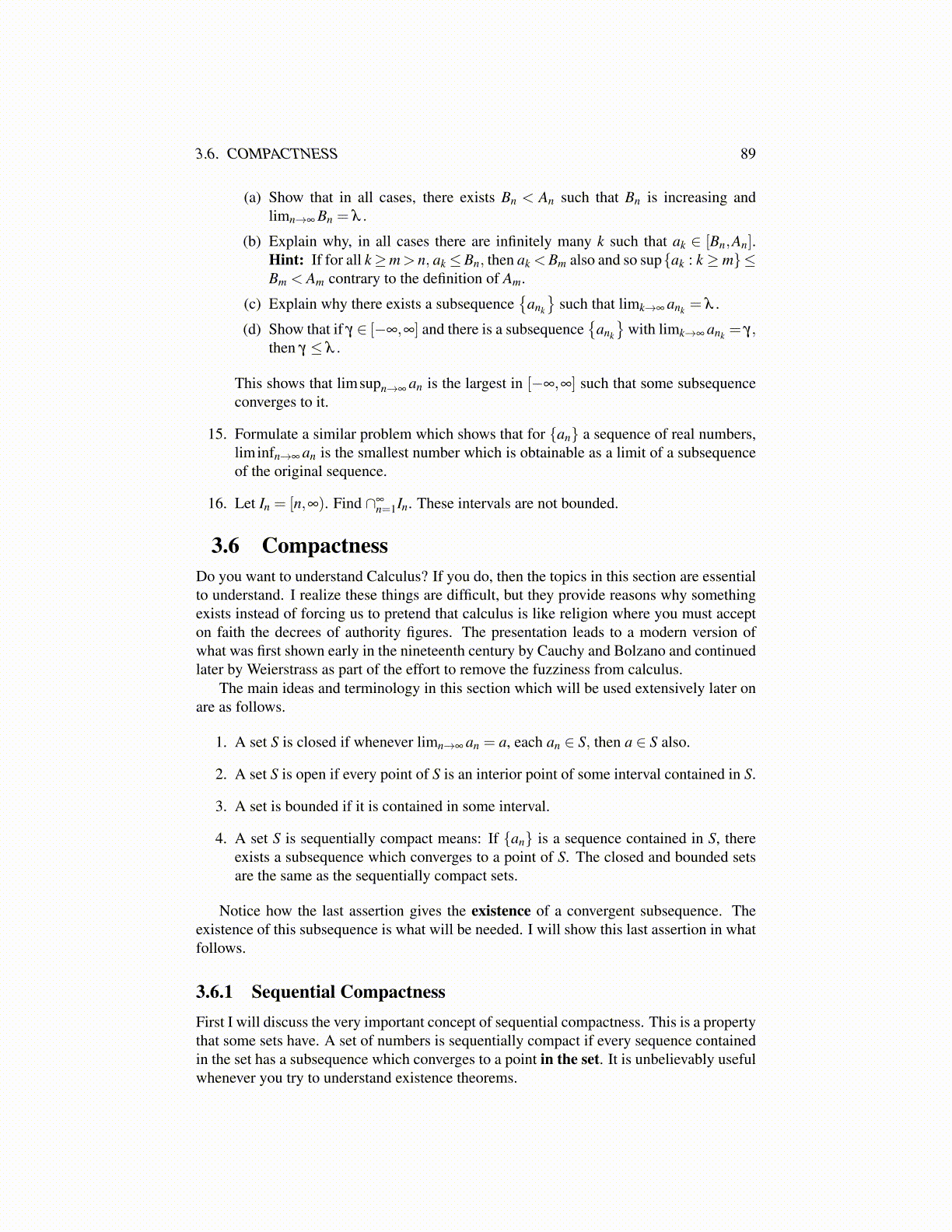
3.6. COMPACTNESS 89
(a) Show that in all cases, there exists Bn < An such that Bn is increasing andlimn→∞ Bn = λ .
(b) Explain why, in all cases there are infinitely many k such that ak ∈ [Bn,An].Hint: If for all k ≥m> n, ak ≤Bn, then ak <Bm also and so sup{ak : k ≥ m}≤Bm < Am contrary to the definition of Am.
(c) Explain why there exists a subsequence{
ank
}such that limk→∞ ank = λ .
(d) Show that if γ ∈ [−∞,∞] and there is a subsequence{
ank
}with limk→∞ ank = γ,
then γ ≤ λ .
This shows that limsupn→∞ an is the largest in [−∞,∞] such that some subsequenceconverges to it.
15. Formulate a similar problem which shows that for {an} a sequence of real numbers,liminfn→∞ an is the smallest number which is obtainable as a limit of a subsequenceof the original sequence.
16. Let In = [n,∞). Find ∩∞n=1In. These intervals are not bounded.
3.6 CompactnessDo you want to understand Calculus? If you do, then the topics in this section are essentialto understand. I realize these things are difficult, but they provide reasons why somethingexists instead of forcing us to pretend that calculus is like religion where you must accepton faith the decrees of authority figures. The presentation leads to a modern version ofwhat was first shown early in the nineteenth century by Cauchy and Bolzano and continuedlater by Weierstrass as part of the effort to remove the fuzziness from calculus.
The main ideas and terminology in this section which will be used extensively later onare as follows.
1. A set S is closed if whenever limn→∞ an = a, each an ∈ S, then a ∈ S also.
2. A set S is open if every point of S is an interior point of some interval contained in S.
3. A set is bounded if it is contained in some interval.
4. A set S is sequentially compact means: If {an} is a sequence contained in S, thereexists a subsequence which converges to a point of S. The closed and bounded setsare the same as the sequentially compact sets.
Notice how the last assertion gives the existence of a convergent subsequence. Theexistence of this subsequence is what will be needed. I will show this last assertion in whatfollows.
3.6.1 Sequential CompactnessFirst I will discuss the very important concept of sequential compactness. This is a propertythat some sets have. A set of numbers is sequentially compact if every sequence containedin the set has a subsequence which converges to a point in the set. It is unbelievably usefulwhenever you try to understand existence theorems.